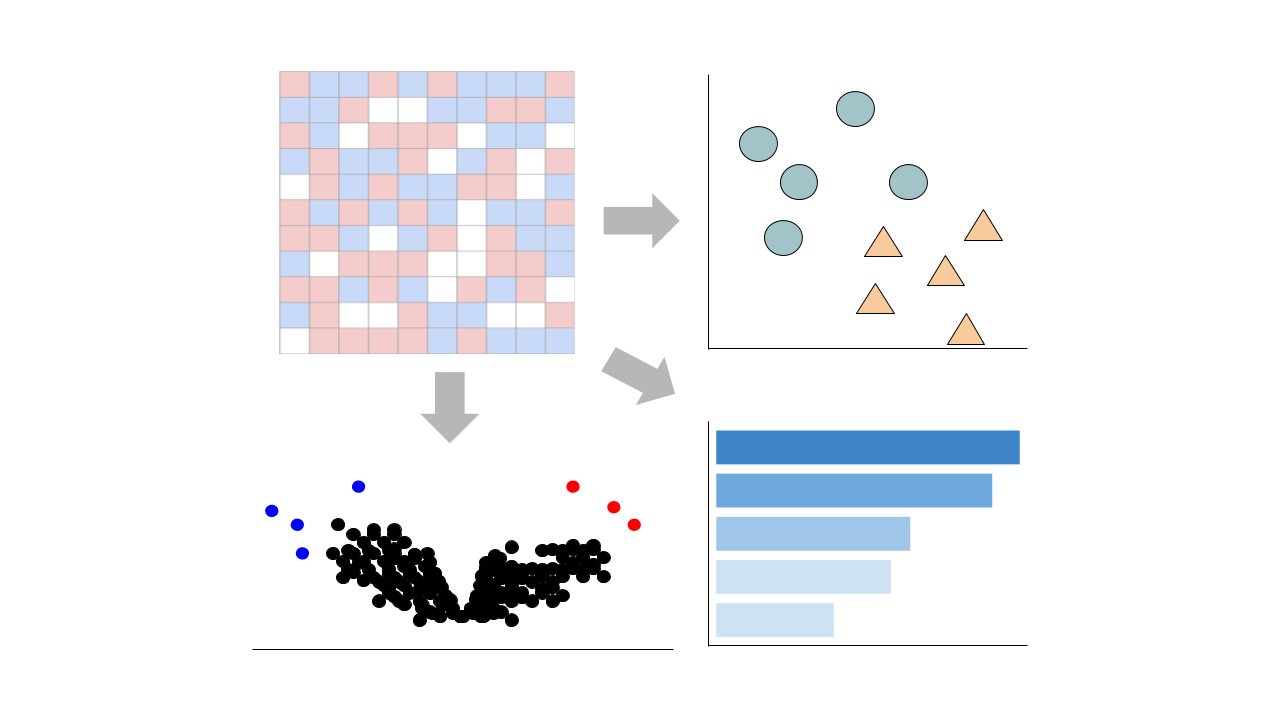 Gene counts are sourced from ARCHS4, which provides uniform alignment of GEO samples.
You can learn more about ARCHS4 and its pipeline here.
Gene counts are sourced from ARCHS4, which provides uniform alignment of GEO samples.
You can learn more about ARCHS4 and its pipeline here.
Select conditions below to toggle them from the plot:
| GROUP | CONDITION | SAMPLES |
|---|---|---|
| pancreatic islets |
GSM5823186 GSM5823189 GSM5823192 GSM5823193
|
|
|
GSM5823187 GSM5823188 GSM5823190 GSM5823191
|
Submission Date: Jan 18, 2022
Summary: Altered islet architecture is associated with β cell dysfunction and Type 2 Diabetes (T2D) progression, but molecular effectors of islet spatial organization remain mostly unknown. Although Notch signaling is known to regulate pancreatic development, we observed "re-activated" β cell Notch activity in obese mouse models. To test the repercussions and reversibility of Notch effects, we generated doxycycline-dependent, β cell-specific Notch gain-of-function mice. As predicted, we found that Notch activation in post-natal β cells impaired glucose stimulated insulin secretion (GSIS) and glucose intolerance, but we observed a surprising remnant glucose intolerance after doxycycline withdrawal and cessation of Notch activity, associated with a marked disruption of normal islet architecture. Transcriptomic screening of Notch-active islets revealed increased Ephrin signaling. Commensurately, exposure to Ephrin ligands increased β cell repulsion, and impaired murine and human pseudo-islet formation. Consistent with our mouse data, Notch and Ephrin signaling are increased in metabolically-inflexible β cells in patients with T2D. These studies suggest than islet architecture can be permanently altered by β cell Notch/Ephrin signaling during a morphogenetic window in early life.
GEO Accession ID: GSE193888
PMID: 35167496
Submission Date: Jan 18, 2022
Summary: Altered islet architecture is associated with β cell dysfunction and Type 2 Diabetes (T2D) progression, but molecular effectors of islet spatial organization remain mostly unknown. Although Notch signaling is known to regulate pancreatic development, we observed "re-activated" β cell Notch activity in obese mouse models. To test the repercussions and reversibility of Notch effects, we generated doxycycline-dependent, β cell-specific Notch gain-of-function mice. As predicted, we found that Notch activation in post-natal β cells impaired glucose stimulated insulin secretion (GSIS) and glucose intolerance, but we observed a surprising remnant glucose intolerance after doxycycline withdrawal and cessation of Notch activity, associated with a marked disruption of normal islet architecture. Transcriptomic screening of Notch-active islets revealed increased Ephrin signaling. Commensurately, exposure to Ephrin ligands increased β cell repulsion, and impaired murine and human pseudo-islet formation. Consistent with our mouse data, Notch and Ephrin signaling are increased in metabolically-inflexible β cells in patients with T2D. These studies suggest than islet architecture can be permanently altered by β cell Notch/Ephrin signaling during a morphogenetic window in early life.
GEO Accession ID: GSE193888
PMID: 35167496
Visualize Samples
 Visualizations are precomputed using the Python package scanpy on the top 5000 most variable genes.
Visualizations are precomputed using the Python package scanpy on the top 5000 most variable genes.
Precomputed Differential Gene Expression
 Differential expression signatures are automatically computed using the limma R package.
More options for differential expression are available to compute below.
Differential expression signatures are automatically computed using the limma R package.
More options for differential expression are available to compute below.
Signatures:
Select conditions:
Control Condition
Perturbation Condition
Only conditions with at least 1 replicate are available to select
 Differential expression signatures can be computed using DESeq2 or characteristic direction.
Differential expression signatures can be computed using DESeq2 or characteristic direction.
This pipeline enables you to analyze and visualize your bulk RNA sequencing datasets with an array of downstream analysis and visualization tools. The pipeline includes: PCA analysis, Clustergrammer interactive heatmap, library size analysis, differential gene expression analysis, enrichment analysis, and L1000 small molecule search.

 Chatbot
Chatbot Single Gene Queries
Single Gene Queries
 Gene Set Queries
Gene Set Queries
 Bulk Studies
Bulk Studies
 Single Cell Studies
Single Cell Studies
 Hypotheses
Hypotheses
 Resources
Resources
 Contribute
Contribute
 Downloads
Downloads About
About
 Help
Help